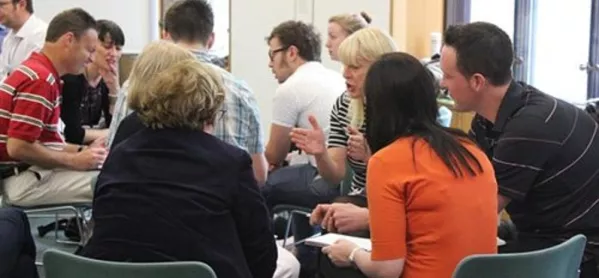- Home
- ‘Teaching schools aren’t going anywhere. They’ve shown a lot of promise’
‘Teaching schools aren’t going anywhere. They’ve shown a lot of promise’

After the work of George Berwick in Bromley, the government took up the idea of teaching schools at a speed that only a secretary of state in a hurry could have contemplated. Hailed by the new government as the way forward in the white paper, The Importance of Teaching, in 2010, the first cohort of 100 teaching schools started the following year and by September 2015 there were 691 teaching schools leading 537 separate teaching school alliances (TSAs). Only schools rated outstanding by Ofsted could apply and the early teaching schools were hailed by the secretary of state as the crème de la crème. Not surprisingly, this further accolade and the chance to take part in a new initiative that was seen as leading the system attracted plenty of ambitious heads.
Since late 2012, a team of researchers led by the University of Nottingham has been evaluating the effectiveness and impact of teaching schools. The team’s report was published last week.
As part of that team, I visited Portswood Primary School in Southampton; the South Lakes Federation in Cumbria, initially involving nine secondary schools; and the Cambridge Teaching School Network, in which five teaching schools in three alliances have come together to operate as a single network.
I have enjoyed every minute of those visits and have seen some outstanding school leaders and teachers, doing some excellent work in each of the areas of responsibility of the teaching school. The National College for Teaching and Leadership (NCTL), which has overseen the teaching school programme, calls these areas of responsibility the “Big 6”: initial teacher training (ITT), continuing professional development (CPD), succession planning and talent management, school-to-school support, specialist leaders of education (SLEs), and research and development, the last of which has tended to be the Cinderella of the six.
There are some undoubted successes - the flexibility of the teaching school programme, with many different models emerging, according to local circumstances and personnel; the increasing fluidity of “membership” of teaching school alliances, with many schools engaging with alliances to varying degrees according to need; a move in 2014 and 2015 towards greater collaboration between teaching schools, in contrast to the competitive atmosphere in which many operated in the first couple of years; a progressive continuum of CPD and leadership development, with increasing coherence but different patterns in each teaching school; excellent CPD through coaching, which has helped many teachers to raise their game; and some superb work by national leaders of education (NLEs), local leaders of education (LLEs) and SLEs supporting other schools; to mention a few of the highlights reported in the research and which I witnessed myself.
Financial challenges
But there are many challenges for teaching schools, at the top of the list of which is financial sustainability, with government funding support being at a very low level in comparison to the breadth of responsibility. Adding to financial concerns is the over-supply of CPD, which means that it is difficult for teaching schools to make enough money on CPD to support their other work strands. Other challenges set out in the report are the geographical incoherence of teaching school locations, with supply and demand out of balance in some parts of the country; the time-consuming task of teaching school leadership, which has meant that some headteachers have had to move almost entirely away from leading their schools; and the difficulty of giving sufficient priority to research and development, when there are so many other pressures on the school.
Accountability is a particular challenge. In contrast to the tight accountability of multi-academy trusts (MATs), teaching school accountability is loose, with self-constructed governance models that often have little external input, and the continuation of the teaching school being dependent on the maintenance of an outstanding Ofsted grade, the judgement on which takes no account whatsoever of the quality of work of the teaching school! Where more than one teaching school shares the leadership of a TSA, this provides an insurance policy against losing teaching school status if one school is downgraded in an inspection.
At a time of weak teacher supply, it is of great concern for the success of the school system as a whole that teaching schools (which are taking increasing numbers of teacher trainees on the School Direct scheme) are disproportionately situated in more favourable areas of the country, with 32 per cent of teaching schools in the quartile with the lowest proportion of disadvantaged children. This means that the best schools in the best areas are getting first pick of the best of the new teachers. That is no way to run the teacher recruitment system that the most challenging areas of the country need.
So there are successes and challenges, but the report resists the temptation to pass an overall judgement on the degree of success of the teaching school system. It is far too soon for that. There are enough encouraging straws in the wind to ensure that teaching schools will remain a vitally important and vibrant part of a school-led system in England for the foreseeable future.
John Dunford is chair of Whole Education, a former secondary head, general secretary of the Association of School and College Leaders and national pupil premium champion
Want to keep up with the latest education news and opinion? Follow TES on Twitter and like TES on Facebook
Keep reading for just £1 per month
You've reached your limit of free articles this month. Subscribe for £1 per month for three months and get:
- Unlimited access to all Tes magazine content
- Exclusive subscriber-only stories
- Award-winning email newsletters



